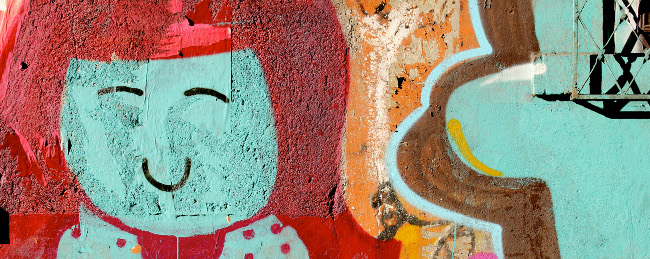
Guide to Street Art
Street Art Definition
Street art can be defined as art that is developed in public spaces and above all, in the street. It can mean a lot of different things including graffiti, sticker art, installations, poster art, wall paintings or murals, stencils and just about any artwork that is displayed in public spaces.
Street art must not be confused with public art. Just like street artworks, public artworks are displayed in public spaces but in contrary to street art pieces, they are planned and commissioned by the government or the owner of the space. Examples include statues, fountains, monuments, memorials and in the recent years also interactive art and public art installations.
History of Street Art
History of street art is closely connected to graffiti. History of the latter dates back to antiquity but they emerged as a form of street art as we know it today only in the 1970s. Among the first graffiti artists to rise to prominence were the New York based artists Lee Quinones and Fab 5 Freddy who became an inspiration for a number of young street artists all over the world, especially after their exhibition in Galleria LaMedusa in Rome, Italy. The 1980s also saw the rise of stencil art with the first examples being created by the French street artist Blek le Rat (Xavier Prou), nicknamed the “father of stencil graffiti”.
The later 1980s and 1990s witnessed popularisation as well as increasing legitimisation of graffiti that were soon joined by new forms of street art including street installations, “Lock On” street sculptures and anamorphic pavement illusions, also known as 3-D pavement art that was invented by Kurt Wenner in the 1980s. Anamorphism as a form of perspective to create a 3-D illusion was used as early as Renaissance but it was Wenner who first used it to create a 3-D illusion on the ground.
Who are Street Artists
Street artists are often closely associated with protesters, activists and rebels but they may also be led by other motives including the need for free expression, humour and provocation. They are usually known only by their pseudonyms and work “illegally”. Their artworks are by some considered a crime and vandalism, and they may be persecuted for property damage.
Many street artists have established themselves as prominent artists and regularly display their artworks in the mainstream galleries and museums. One of such artists is also England-based Banksy whose identity remains unknown despite his international fame. Unlike Banksy, some street artists eventually revealed their true identity but they are the exception rather than the rule.